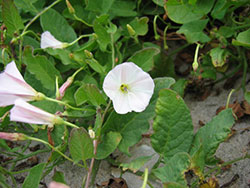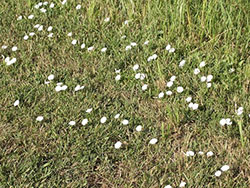What is field bindweed?

Field bindweed (Convolvulus arvensis) is a common problem in Colorado lawns in summer. Bindweed and other weeds don’t compete well in a dense, healthy, well cared-for lawn. This deeply-rooted perennial member of the morning glory family will quickly take over unhealthy, malnourished lawns suffering from drought stress or poor irrigation coverage.
How can I control bindweed?
The first steps towards control include fertilizing adequately (2 to 4 times per year depending on turf species and age of lawn), timely and uniform irrigation and mowing the lawn at 2 to 3 1/2 inches. These practices alone can substantially reduce the amount of bindweed in a lawn within a couple years. Bindweed can be more quickly controlled by combining proper management with judicious herbicide use.
What products are useful in controlling bindweed?

Pre-emergent herbicides are useless for controlling bindweed. Systemic post-emergent products are necessary because of its deep and extensive root system. Used alone, 2,4-D is largely ineffective against bindweed. Three-way mixtures containing dicamba or dichlorprop (in addition to 2,4-D and MCPP/MCPA) can provide moderate to good control.
The herbicide quinclorac (sold as Drive XLR8) is highly effective at controlling bindweed. Quinclorac is available to the homeowner in the products Ortho Weed B Gon MAX plus Crabgrass Control, Bayer Advanced T All-In-One Lawn Weed & Crabgrass Killer and Spectracide Weed Stop for Lawns plus Crabgrass Killer. These herbicides are labeled only for use in lawns and can’t be legally or safely used in landscape beds or vegetable gardens.



